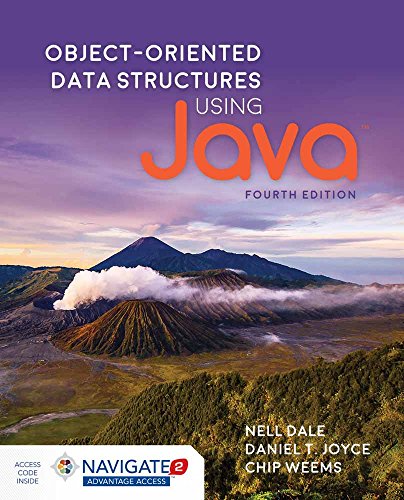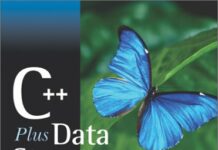
Ebook Info
- Published: 2016
- Number of pages: 694 pages
- Format: PDF
- File Size: 33.20 MB
- Authors: Nell Dale
Description
The updated and revised Object-Oriented Data Structures Using Java, Fourth Edition is an essential resource for students learning data structures using the Java programming language. It presents both the traditional and modern data structure topics with an emphasis on problem-solving and object-oriented software design. Beginning early and continuing throughout the text, it introduces and expands upon the use of many Java features such as classes, objects, generics, polymorphism, packages, interfaces, library classes, inheritance, exceptions, and threads.
User’s Reviews
Editorial Reviews: About the Author Nell Dale received a B.S. in Mathematics and Psychology from the University of Houston, a M.A. in Mathematics, from the University of Texas at Austin, and a Ph.D. in Computer Sciences from the University of Texas at Austin. Nell Dale has been on the faculty at the University of Texas, Austin since 1975. She teaches occasionally but concentrates on computer science education, writing, traveling, tennis, and bridge — and her family of course.Daniel Joyce is an Associate Professor with the Computing Science department at Villanova University. He enjoys managing the departments’ project-based courses. Joyce’s research interests are in software engineering with a focus in software requirements identification. He is also active in the computer science education community.Chip Weems is an Associate Professor of computer science at the University of Massachusetts at Amherst. He received his Bachelor’s and Master’s degrees from Oregon State University in 1977 and 1979, respectively. He received a Ph.D. from the University of Massachusetts in 1984. Over the last 23 years, he has taught courses in introductory programming, software engineering, computer architecture, and parallel processing. Since 1986 he has co-authored 13 textbooks that have helped over a million students learn to program computers. His books have been translated into French, Spanish, and Russian. He conducts research in computer architecture, compilers, parallel processing, and compiler-architecture co-optimization.
Reviews from Amazon users which were colected at the time this book was published on the website:
⭐Meant for students with a decent foundation of basic Java programming. Fairly easy to read and lots of good explanations, but the exercises are often very difficult to interpret and hard to follow. As far as programming books go, one of the better ones out there.
⭐It is good make you understand data structure
⭐It specifically says that the page numbers on the e-book are the same as the textbook. They aren’t.
⭐This book breaks concepts down really well without being overly complicated. I took data structures as an independent study at my university and was able to teach myself all of the content using just the book.
⭐Great book! Exactly what I was looking for!
⭐Use for school
⭐The best book to learn object oriented data structures. The explanations are detailed and illustrated well, the prose is comprehensible, and the efficiency analysis instructive.
⭐This was the supplementary text for a college course on DS&A. I found it to be very approachable and well presented.
Keywords
Free Download Object-Oriented Data Structures Using Java 4th Edition in PDF format
Object-Oriented Data Structures Using Java 4th Edition PDF Free Download
Download Object-Oriented Data Structures Using Java 4th Edition 2016 PDF Free
Object-Oriented Data Structures Using Java 4th Edition 2016 PDF Free Download
Download Object-Oriented Data Structures Using Java 4th Edition PDF
Free Download Ebook Object-Oriented Data Structures Using Java 4th Edition
